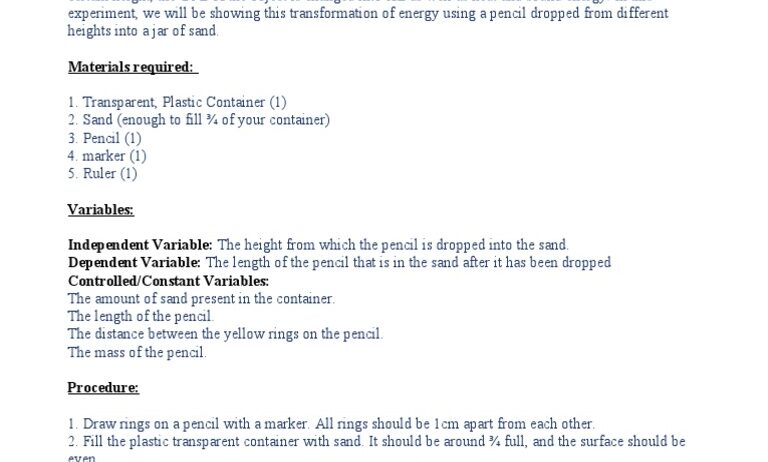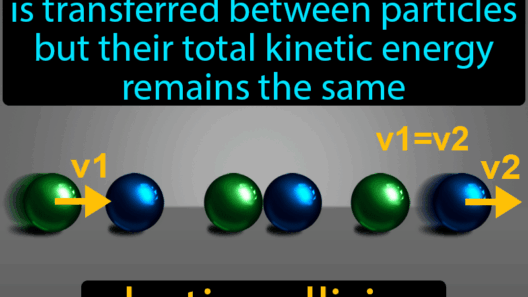Does it ever seem like the universe is playing tricks on us? We often ponder peculiar phenomena that seemingly challenge our understanding of fundamental principles. One such principle is the Law of Conservation of Energy, a cornerstone of physics that posits energy cannot be created or destroyed; it can only be transformed from one form to another. This law is foundational and has stood the test of time. However, throughout the ages, eccentric cases arise, raising provocative questions. Let’s embark on an exploration of these strange instances, understanding why they captivate the imagination and whether they defy conventional wisdom.
We begin with a definition of the Law of Conservation of Energy. In essence, it asserts that the total energy in a closed system remains constant. This is prevalent in various scientific fields, from thermodynamics to quantum mechanics. Yet, when faced with anomalies, the resolve of this law is tested, and the theories surrounding it ignited. So, what exactly are these odd cases? Let’s delve into several instances that have sparked debates among scientists, ethicists, and enthusiasts alike.
The first curious phenomenon to consider is the concept of overunity devices, often touted as perpetual motion machines. These contraptions appear to output more energy than they consume, seemingly creating energy from nothing. For example, devices that utilize magnets to produce excess energy capture the imagination yet provoke skepticism among scientists. Proponents assert that through clever engineering, the net energy gain can surpass input. However, upon scrutiny through the lens of established physics, these devices appear to violate the conservation principle, as energy must ultimately come from somewhere. Thus, while they pique curiosity, they teeter on the edge of pseudoscience.
Next, let’s examine the exciting world of quantum physics. The quantum realm operates under different paradigms, leading to phenomena that can bewilder even the most seasoned physicists. Consider quantum entanglement, where particles become interconnected such that the state of one instantaneously influences another, regardless of distance. Some argue this challenges classical concepts of energy transfer. Yet, it does not violate the conservation law, for the total energy of isolated systems remains unchanged. Instead, it underscores the complexity of energy interactions at microscopic scales. This area invites deeper inquiry and challenges our understanding without contravening established laws.
We cannot explore the topic without highlighting the implications of black holes. These cosmic entities bend our comprehension of physics. As they draw in stellar matter, they emit significant radiation before succumbing to the gravitational pull. In a black hole’s vicinity, the energy conservation law appears compromised. However, Stephen Hawking’s theory posits that black holes can radiate energy in the form of Hawking radiation, allowing for energy transfer even in such dense regions. Thus, while it feels counterintuitive, the overarching law holds true even against the cosmic drama of black holes.
Let’s shift our sights to everyday experience. Have you ever observed the phenomenon of ‘energy vampires’? These are devices like chargers and televisions that continue to draw small amounts of electricity when not actively in use, albeit in a dormant state. This scenario is a reminder that energy, while conserved in closed systems, is not immune to inefficiency. Each device can oscillate between energy consumption and dormancy, illustrating that the energy is still being utilized in various forms, albeit wastefully. Consumers can mitigate this energy drain by utilizing power strips or smart home technology, highlighting the integral relationship between usage and conservation.
Wind and solar power pose another fascinating inquiry. As renewable resources become increasingly vital within the context of climate change, the question arises: Does harnessing natural energy somehow violate conservation laws? In reality, these practices epitomize energy transformation rather than creation. Wind turbines convert kinetic energy into electrical energy, while solar panels capture radiant energy and transform it into usable power. The Law of Conservation of Energy remains intact, guiding us toward sustainable solutions to our energy crises. Rather than challenging established principles, renewables exemplify innovative applications of energy transformation.
Moreover, consider energy transfer in biological systems. Photosynthesis in plants elegantly illustrates the conversion of sunlight into chemical energy. Here, light energy directly transforms into fuel for growth, defying our perceptions of energy transformation at larger scales. Yet, this process adheres strictly to the conservation law. Inputs and outputs respect the fundamental balance. This intricate cycle of energy transfer not only sustains ecosystems but embodies a mantra of symbiosis: all forms ultimately return to the continuum of existence.
As we traverse these various phenomena, it becomes abundantly clear that while peculiarities arise, they rarely contravene established laws. Instead, they serve as gateways to profound understandings, challenging us to rethink boundaries and expand conceptual frameworks. Each case illuminates the multifaceted nature of energy, reaffirming the importance of this immutable law.
In conclusion, the enigmatic cases that flirt with the boundaries of the Law of Conservation of Energy reveal nothing inherently contradictory but rather underscore the complexity and richness of the natural world. The exercise of examining these unusual instances fosters a deeper appreciation for physics, urging us to probe further, investigate intricately, and respect the elegance of the universe’s laws. As we confront the pressing challenges of our time, particularly in the realm of climate change, it becomes increasingly important to harness our understanding of energy, ensuring sustainable practices and fostering innovation while honoring the persistence of the fundamental laws that guide our existence.








